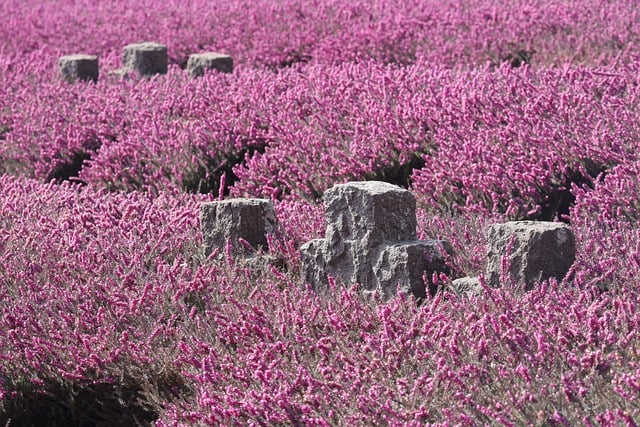This section delves into the cremation process and the variety of respectful ways to memorialize the resulting ashes. It details how cremation services manage the procedure with sensitivity and in compliance with regulatory standards, resulting in cremated remains that can be memorialised through various means such as keeping them in an urn, burying them, or scattering them in meaningful locations. These services also offer eco-friendly options like biodegradable urns for natural burials or scattering, and more contemporary choices like metallic urns repurposable into jewelry or art. For those who wish to maintain a close connection with their loved ones, cremation jewelry—Bijoux cineraires—transforms ashes into wearable memorials. Niches in columbariums provide a permanent resting place for the ashes within dedicated structures. The legal and environmental frameworks governing the handling of cremation ashes are also discussed, emphasizing the cremation industry's commitment to sustainable practices and health safety. Crematoriums ensure dignified processing and return of ashes, offering families flexible options for ash collection. Cremation services are integral, providing not just technical support but also compassionate care and guidance throughout the process. As a widely adopted end-of-life choice, cremation offers a versatile and meaningful way to honor the deceased, with options ranging from traditional burials to innovative practices like creating artificial reefs or memorial jewelry, ensuring the legacy of the departed remains vibrant in the memories of those they leave behind.
When contemplating end-of-life choices, understanding the various aspects of cremation is paramount. This article delves into the cremation process and the diverse options for returning ashes, shedding light on the significance of selecting appropriate urns while also considering legal and environmental factors. Crematoriums play a crucial role in this sensitive process, ensuring respectful handling and return of ashes. Additionally, we explore inventive ways to memorialize loved ones through their ashes, offering guidance for those seeking meaningful remembrance practices.
- Understanding the Cremation Process and Ash Return Options
- Types of Cremation Urns for Ash Returns
- Legal and Environmental Considerations for Cremation Ashes
- The Role of Crematoriums in Handling and Returning Ashes
- Memorializing Loved Ones with Cremation Ashes: Creative Ideas and Practices
Understanding the Cremation Process and Ash Return Options

When a loved one has passed and cremation has been chosen as the method of disposition, understanding the process and available ash return options is essential. Cremation is a respected and widely adopted alternative to traditional burial. The cremation process begins with the decedent being placed in a cremation chamber, or furnace, where high heat reduces the body to its basic components. This process is carried out with dignity and in accordance with local and national regulations. The remaining material, typically bone fragments, is then processed into fine particles, known as cremated remains or ash.
Following the cremation, there are several options for returning and honoring the ashes of the deceased. Many families choose to keep the ashes in an urn, often placing it in a columbarium niche, a grave site, or maintaining it at home as a cherished memorial. Alternatively, some may opt to bury the remains, scatter them in a meaningful location, or incorporate them into jewelry or art. Cremation services provide guidance and support throughout this process, ensuring that each return option aligns with the family’s preferences and cultural or religious beliefs. Whether it’s through interment, scattering, or memorialization, these services facilitate respectful and personal ways to commemorate a life that has been lived.
Types of Cremation Urns for Ash Returns

When it comes to returning cremation ashes, families have a variety of options in urns that reflect the unique personality and preferences of the deceased. Cremation services offer diverse types of urns, ranging from simple and economical to elaborate and personalized. Traditional biodegradable urns made from materials like wood, ceramic, or stone are a sustainable choice for natural burial or scattering. For those who prefer a more contemporary approach, metal urns, including bronze, silver, or gold, provide a lasting keepsake that can also be incorporated into jewelry or art. Additionally, keepsake urns allow family members to divide the ashes among several smaller urns, enabling a shared remembrance that can be kept in different locations. Bijoux cineraires, or cremation jewelry, transforms a portion of the ashes into wearable memorials, offering an intimate and discreet way to carry a loved one with you. Finally, columbarium niches are another option for those who choose to have their remains in a permanent resting place within a dedicated structure. Each type of urn and keepsake serves as a tangible reminder of the life lived and the legacy left behind, offering comfort and continuity through cremation services.
Legal and Environmental Considerations for Cremation Ashes

When considering the return of cremation ashes, legal and environmental frameworks play a pivotal role in shaping the practices and policies around their disposition. Legally, regulations vary by region but generally dictate how cremation remains must be handled post-ceremony. These laws ensure that the process respects both the deceased’s wishes and public health concerns. For instance, guidelines may specify how ashes should be stored, transported, and recorded, with a focus on preventing any health hazards or environmental contamination.
Environmental considerations are equally significant in the context of cremation services. The environmental impact of crematoriums includes emissions that contribute to air pollution, as well as the consumption of resources like gas and electricity. Cremation facilities work within stringent environmental regulations to minimize their carbon footprint, employing advanced technology and adopting eco-friendly practices. Additionally, there is a growing trend towards ‘green’ cremations, which aim to reduce the ecological impact even further by using less energy and capturing mercury from dental amalgam, ensuring that the ashes returned to families are not only a keepsake but also an outcome of sustainable practices. This commitment to environmental stewardship in the cremation process underscores the industry’s evolving approach to honor both the deceased and the living by upholding legal standards and preserving the natural world for future generations.
The Role of Crematoriums in Handling and Returning Ashes

Crematoriums play a pivotal role in the cremation process, ensuring that the ceremony and the subsequent handling of ashes are conducted with dignity and respect. Upon completion of the cremation process, which is a dignified service provided by reputable cremation services, the remains are carefully processed to be returned to the family or individuals authorized to receive them. The crematorium’s protocols involve reducing the remains to their skeletal structure, which is then processed into a consistent and manageable form—cremated ashes. These ashes are then placed in an urn or another container at the request of the family. The crematrium ensures that each step, from the initial transfer of the deceased to the final placement of the ashes, is performed with care and attention to detail, adhering to legal and ethical standards. Families can choose from a variety of options for the return of the ashes, whether it be by post, direct delivery, or collection from the crematorium itself. The cremation services provided encompass not only the technical aspects of the process but also the compassionate support to grieving families during this sensitive time.
Memorializing Loved Ones with Cremation Ashes: Creative Ideas and Practices

Cremation has become a common choice for many individuals and families as a respectful and meaningful way to lay to rest their loved ones. The versatility of cremation ashes allows for a wide array of memorializing practices, each reflecting the unique bond between the deceased and those they leave behind. One can opt for traditional methods such as burial in an urn or scattering in a significant location, but contemporary ideas also abound. For instance, some choose to incorporate the ashes into artificial reefs, creating a living legacy that benefits marine ecosystems while honoring their passed loved one. Another innovative approach is to have a portion of the ashes made into jewelry, allowing for a tangible keepsake that can be worn close to the heart. Cremation services providers often assist in these processes, ensuring that the remembrance is not only dignified but also personalized and meaningful. They provide guidance on legal requirements for scattering ashes and offer options for commemorative ceremonies that celebrate the life lived. This ensures that the memory of the deceased remains a vital part of their family’s story, with cremation serving as a testament to the lasting impact they had.
When contemplating the end-of-life options for a loved one, understanding the cremation process and the subsequent ash return choices becomes paramount. This article has navigated the spectrum of urn types available for dignified ash returns, shed light on the legal and environmental considerations affecting cremation ashes, and highlighted the critical role of crematoriums in this delicate process. Moreover, it has provided a wealth of creative ideas and practices for memorializing loved ones, ensuring their memory lives on in a manner that honors their legacy. As one reflects on these aspects of cremation services, it is clear that making informed decisions is essential to respecting the wishes and memories of those we cherish. With this knowledge, individuals can approach the process with confidence and peace of mind, crafting meaningful tributes that align with personal beliefs and cultural practices.
